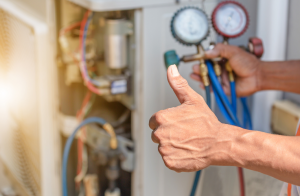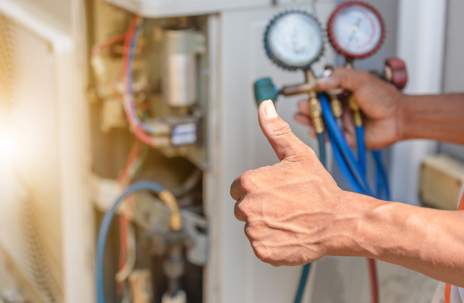In an era where energy efficiency and indoor comfort are paramount, ensuring your HVAC system is perfectly balanced has become a crucial task for homeowners and businesses alike. An unbalanced system can lead to uneven temperatures, increased energy consumption, and a general decline in environmental quality within your space. This often results in discomfort, higher utility bills, and a strain on your HVAC equipment.
Expert HVAC system balancing services employ steps and advanced techniques to fine-tune your heating, ventilation, and air conditioning system, promoting even air distribution and optimal performance. From initial assessments and airflow measurements to the adjustment of vents and the calibration of thermostats, these services ensure every corner of your space enjoys consistent comfort.
Additionally, understanding common challenges and knowing when to seek professional services can save you time and ensure your system operates efficiently for years to come.
This guide will walk you through the essential steps and techniques involved in HVAC system balancing services. You’ll gain insight into how these services can transform your indoor environment, learn about the advanced methods professionals use to achieve balance, and understand the common challenges they face. Plus, we’ll advise on when it’s time to call in the experts, ensuring your HVAC system remains in top condition.

Steps in HVAC System Balancing Services
HVAC system balancing is the process of optimizing the heating, ventilation, and air conditioning system to ensure even air distribution throughout a building. It’s like fine-tuning a musical instrument to achieve the perfect harmony of temperature and airflow. This ensures every room is comfortable, energy efficiency is maximized, and the HVAC system operates smoothly.
Step 1: Initial Assessment and Planning
The first step involves a thorough inspection of your HVAC system. This includes examining the ductwork layout, the size and type of HVAC unit, and current airflow patterns. The goal is to identify any issues that could affect balance, such as leaks, blockages, or improperly sized ducts. Planning also involves setting goals for what the balancing will achieve, like improved comfort or reduced energy usage.
Step 2: Measuring Airflow in Ducts
Special tools, like anemometers or airflow meters, are used to measure the amount of air coming through the ducts into each room. This step is crucial for understanding how air is currently distributed throughout the space and identifying areas where adjustments are needed to achieve balance.
Step 3: Adjusting Air Vents and Registers
Based on the airflow measurements, air vents, and registers in various rooms may need to be adjusted. This can mean opening, closing, or partially adjusting vents to increase or decrease airflow to certain areas. The aim is to ensure that each room receives an appropriate amount of air for its size and usage.
Step 4: Utilizing Balancing Dampers
Balancing dampers are mechanisms within the ductwork that can be adjusted to regulate airflow. They are located at strategic points in the duct system and can be opened or closed to redirect air. Adjusting these dampers is a more precise way to fine-tune airflow to different parts of the building.
Step 5: Thermostat Calibration for Balance
The thermostat plays a crucial role in maintaining the balance of an HVAC system. It must be calibrated to ensure it correctly reads and regulates the temperature. This step may involve testing and adjusting the thermostat’s settings and placement to reflect the building’s temperature accurately.
Step 6: Final System Testing and Verification
After adjustments, the system is tested again to verify that the desired balance has been achieved. This involves re-measuring duct airflow, checking room temperatures, and ensuring the system operates efficiently. Final testing confirms that each building area receives adequate airflow and that the HVAC system runs as efficiently as possible.
Advanced Techniques in HVAC Balancing Services
HVAC balancing has evolved with technology, incorporating advanced techniques that ensure precision and efficiency. One such method involves using HVAC software to model airflow and temperature distribution throughout a building, allowing technicians to make informed adjustments. Infrared thermography is another tool used to visualize heat patterns and identify areas of heat loss or gain, which can affect balance.
Automated balancing dampers, controlled remotely or through smart systems, offer real-time adjustments based on continuous monitoring of airflow and temperature. Additionally, sound level meters ensure adjustments do not lead to unacceptable noise levels, maintaining a comfortable environment.
This technological advancement is important to HVAC system commissioning, where these tools and methods are employed to verify and ensure that the entire HVAC system functions optimally.
Common Challenges in HVAC System Balancing Services
Balancing an HVAC system can present various challenges, even for seasoned professionals. One common issue is inaccessible ductwork, where parts of the system are hidden in walls or ceilings, making it difficult to measure airflow directly or adjust dampers. Varying occupancy and usage patterns in commercial buildings can also complicate balancing efforts, as different areas may have fluctuating heating and cooling needs throughout the day.
Aging systems pose another challenge; components may be worn or outdated, affecting performance and limiting the effectiveness of balancing efforts. Lastly, incorrect initial system design can lead to fundamental issues that are complex and costly to rectify, requiring extensive modifications to achieve proper balance.
When to Seek Professional HVAC Balancing Services
While many aspects of HVAC maintenance can be handled personally, sometimes it’s best to call in the professionals. Here are some indicators that professional services are needed:
- Persistent Comfort Issues: If you’ve tried adjusting your system but still experience uneven temperatures or poor air quality, a professional can assess and rectify complex balance issues.
- Renovations or Extensions: Any significant changes to your home’s layout can affect the balance of your HVAC system. A professional can ensure your modified space remains comfortable and efficient.
- New System Installation: If you’re installing a new HVAC system, professional balancing, and learning about new HVAC system commissioning is essential to start on the right foot, ensuring optimal performance from the beginning.
- Aging System: Older systems may suffer from wear and tear that affects their balance. Professionals can determine whether your system can be adjusted or needs upgrading.
- High Energy Bills: An unexpected rise in energy costs, despite regular maintenance, suggests your system may be inefficient and require professional balancing.
Seeking professional HVAC balancing services ensures your system operates efficiently, saving you money and enhancing comfort in the long run.
Seeking professional HVAC balancing services ensures your system operates efficiently, saving you money and enhancing comfort in the long run. Also, knowing the best time for HVAC commissions is critical; ideally, commissioning should occur after installation or significant system modifications to ensure everything is set up correctly and running efficiently.

